- About MAA
- Membership
- MAA Publications
- Periodicals
- Blogs
- MAA Book Series
- MAA Press (an imprint of the AMS)
- MAA Notes
- MAA Reviews
- Mathematical Communication
- Information for Libraries
- Author Resources
- Advertise with MAA
- Meetings
- Competitions
- Programs
- Communities
- MAA Sections
- SIGMAA
- MAA Connect
- Students
- MAA Awards
- Awards Booklets
- Writing Awards
- Teaching Awards
- Service Awards
- Research Awards
- Lecture Awards
- Putnam Competition Individual and Team Winners
- D. E. Shaw Group AMC 8 Awards & Certificates
- Maryam Mirzakhani AMC 10 A Awards & Certificates
- Two Sigma AMC 10 B Awards & Certificates
- Jane Street AMC 12 A Awards & Certificates
- Akamai AMC 12 B Awards & Certificates
- High School Teachers
- News
You are here
Who's That Mathematician? Paul R. Halmos Collection - Page 43
For more information about Paul R. Halmos (1916-2006) and about the Paul R. Halmos Photograph Collection, please see the introduction to this article on page 1. A new page featuring six photographs will be posted at the start of each week during 2012.
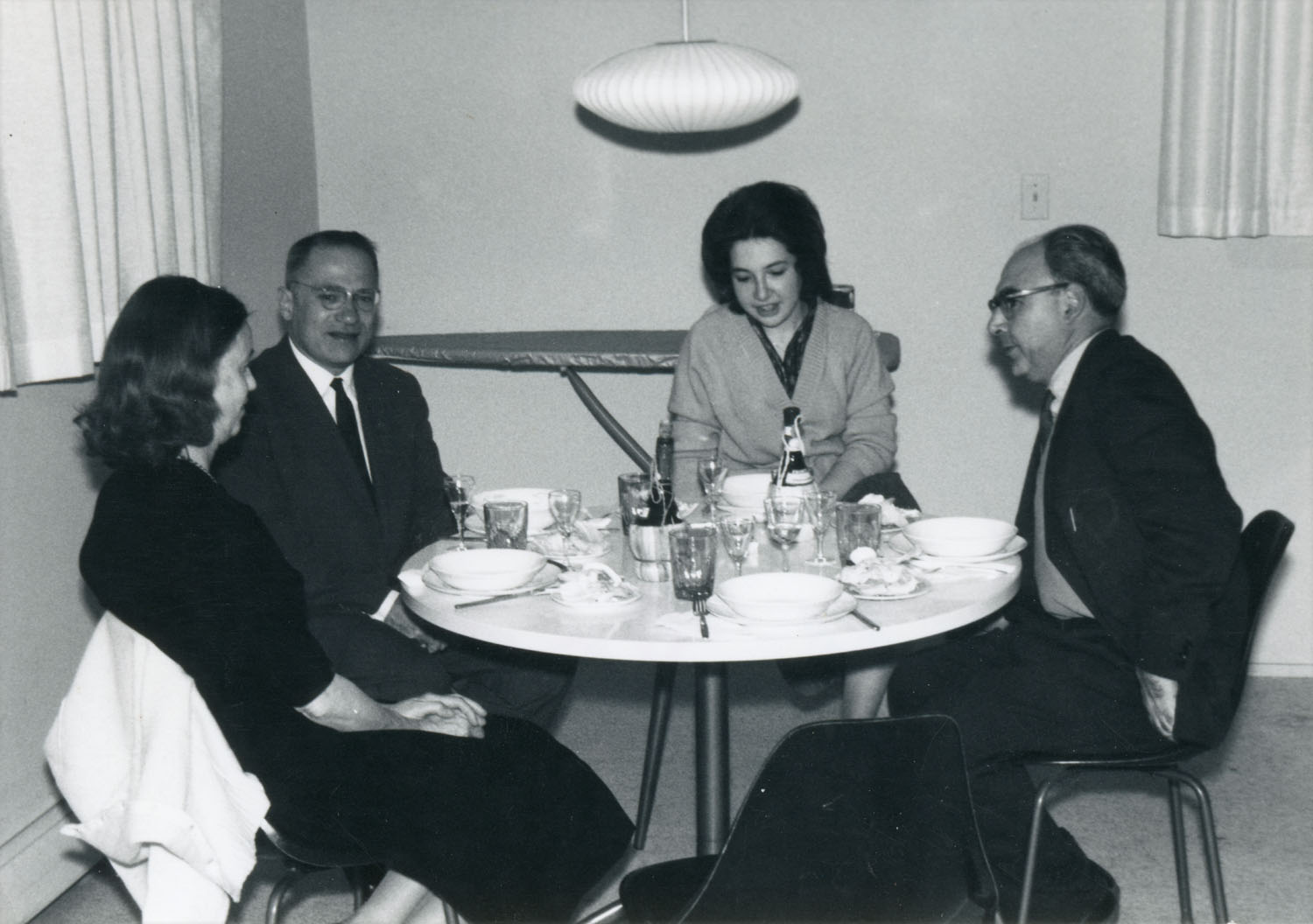
Halmos photographed, left to right, Virginia Halmos, Béla Szökefalvi-Nagy (1913-1998), Zsuzsanna (Zsuzsa) Rényi, and Alfréd Rényi (1921-1970) in April of 1964 in Ann Arbor, Michigan, possibly in the Halmos' home there. Halmos was a professor at the University of Michigan from 1961 to 1968. Another photograph of Virginia Halmos, wife of Paul Halmos, can be found on page 35 of this collection, where you can read more about her. Photos of Béla Szökefalvi-Nagy appear on page 9, page 14, page 36, and page 38 of this collection; read more about him on pages 9 and 14. Zsuzsanna Rényi is the daughter of Alfréd Rényi. Another photograph of Alfréd Rényi appears on page 42 of this collection, where you can read more about him. (Sources: MacTutor Archive, Mathematics Genealogy Project)
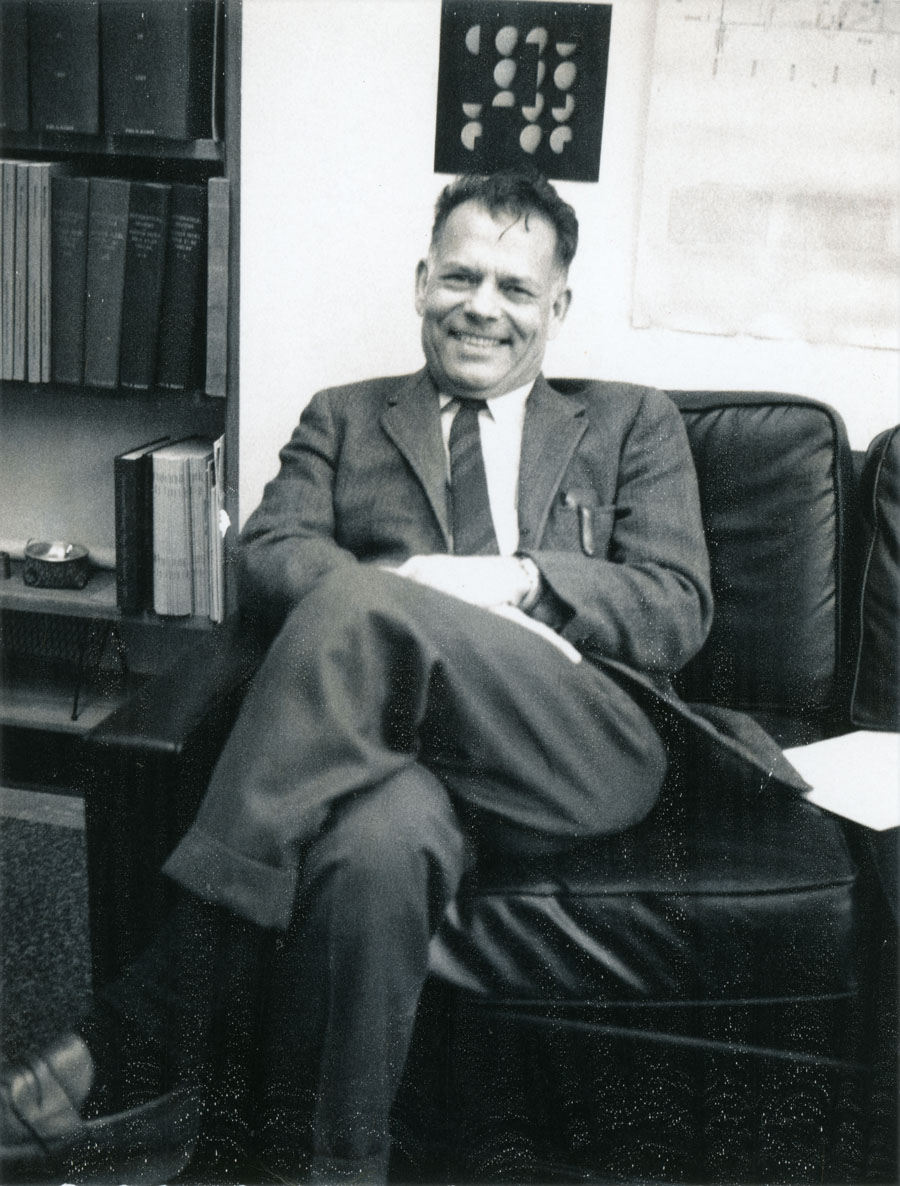
Charles Rickart (d. 2002) was photographed by Halmos on February 9, 1970, in Bloomington, Indiana. Rickart earned his Ph.D. in 1941 from the University of Michigan with the dissertation, “Integration in a Convex Linear Topological Space,” written under advisor T. H. Hildebrandt. (For a photograph of Hildebrandt, see page 23 of this collection.) After two years at Harvard, Rickart joined the faculty at Yale University in 1943, becoming Percey F. Smith Professor of Mathematics in 1963 and Professor Emeritus in 1983. In addition to his research on Banach algebras, he was known for his excellence and interest in teaching at all levels. During the late 1950s and early 1960s, he helped develop the “new math” for American schools. (Sources: Mathematics Genealogy Project, Yale University obituary)
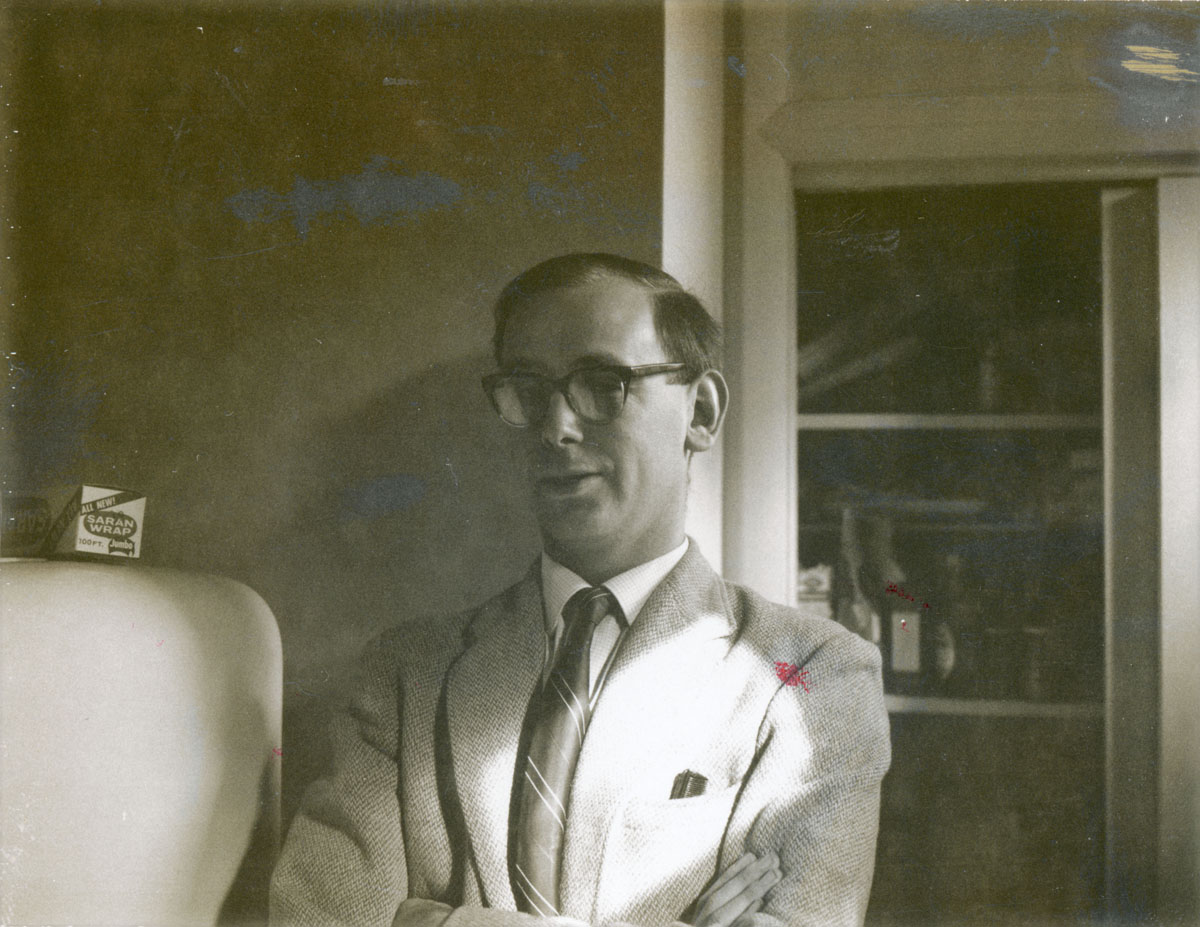
Halmos photographed John Ringrose on October 10, 1964, in Philadelphia, Pennsylvania. Ringrose earned his Ph.D. in operator theory in 1957 from Cambridge University under advisor Frank Smithies. After two years at the University of Newcastle-upon-Tyne (1957-59) and two years back at Cambridge (1961-63), he has spent his career at Newcastle, becoming Chair of Pure Mathematics in 1964, the year this photo was taken, and Professor Emeritus in 1993. O’Connor and Robertson of the MacTutor Archive described Ringrose as “a leading world expert on non-self-adjoint operators and operator algebras,” and praised his 1971 text on the former subject as well as his and Richard Kadison’s (see page 26 for a photo of Kadison) four-volume work on the latter subject. (Sources: MacTutor Archive, Mathematics Genealogy Project)

Robert Ritchie, left, and Raymond Wilder (1896-1982) were photographed by Halmos in March of 1964 in Ann Arbor, Michigan. Halmos and Wilder were on the faculty at the University of Michigan in Ann Arbor at the time. Ritchie earned his Ph.D. in 1960 from Princeton University with the dissertation, “Classes of Recursive Functions of Predictable Complexity,” written under advisor Alonzo Church. He spent much of the next two decades at the University of Washington in Seattle and, by 1985, had become manager of the Computer Science Laboratory at the Xerox Palo Alto (California) Research Center (PARC). (Sources: Mathematics Genealogy Project; George E. Pake, “Research at Xerox PARC: A Founder’s Assessment,” IEEE Spectrum (Oct. 1985), pp. 54-61)
Wilder earned his Ph.D. in general topology in 1923 from the University of Texas at Austin under advisor R. L. Moore, Moore’s first of 47 doctoral students at Texas (for a photo of Moore, see page 35 of this collection). After one year as an instructor at Texas and another two years at Ohio State University, Wilder joined the faculty at the University of Michigan in Ann Arbor, where he would remain until his retirement in 1967 and where Halmos also was on the faculty from 1961 to 1968. Wilder spent the rest of his career and life based at the University of California, Santa Barbara, where Halmos spent the years 1975-77. Wilder worked on set theoretic topology during the 1920s, broadening his interests to include algebraic topology and topology of manifolds during the 1930s and 1940s. He is best known today for his work on the foundations of mathematics and, in particular, for his books Introduction to the Foundations of Mathematics (1952) and Mathematics as a Cultural System (1981). Wilder was president of the American Mathematical Society (AMS) during 1955-56 and of the MAA during 1965-66. (Sources: MacTutor Archive, AMS Presidents, MAA Presidents)
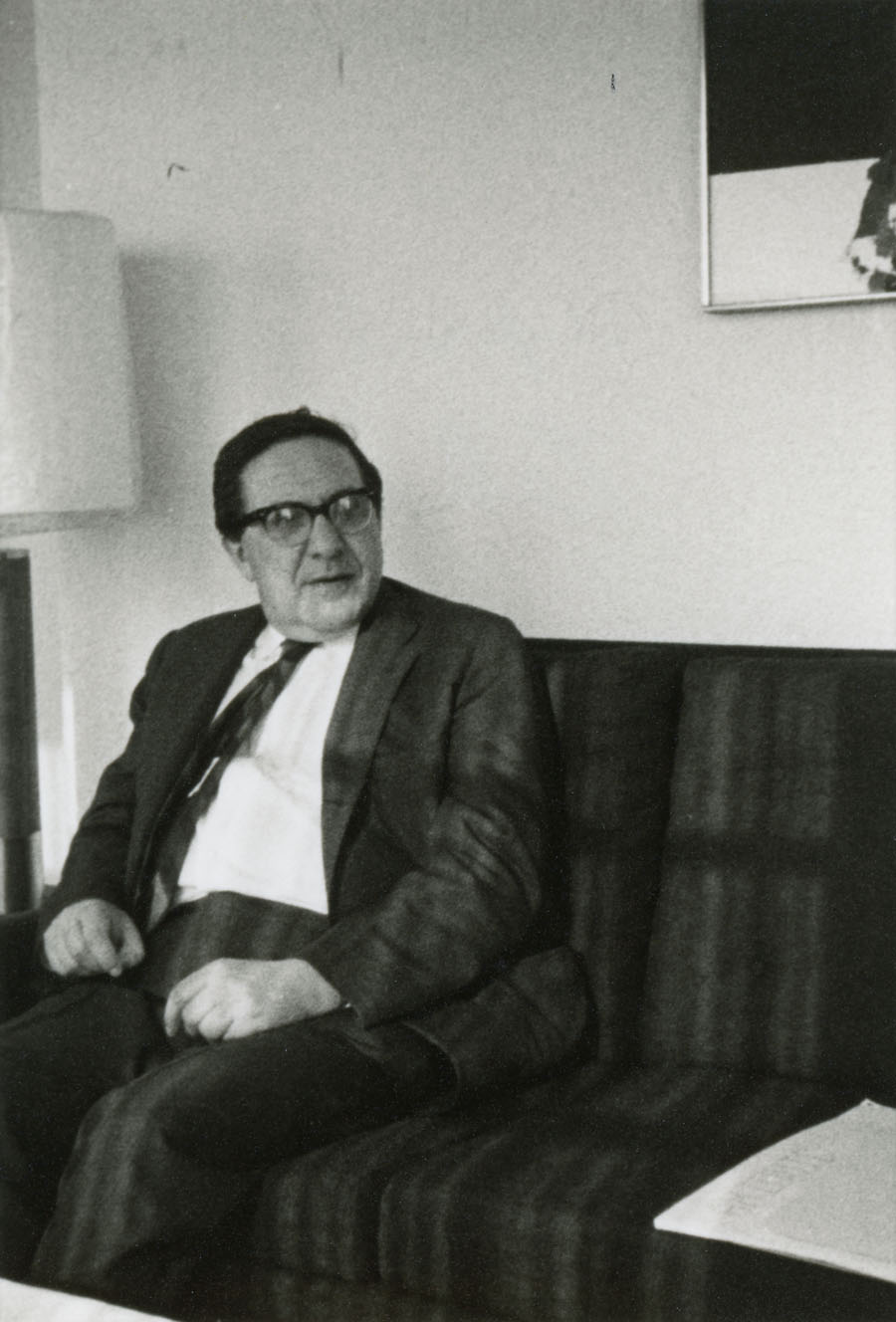
Halmos photographed Ronald Rivlin (1915-2005) in April of 1970 at Lehigh University in Bethlehem, Pennsylvania. Born in London, England, Rivlin earned his Sc.D. from Cambridge University in 1952, specializing in applied mathematics. He had worked as a physicist for the British Rubber Producers Research Association and, from 1950 to 1953, served as its supervisor of research. In 1953, he joined the faculty of Brown University in Providence, R. I., and, in 1967, he moved to Lehigh University to help found its Center for Applied Mathematics, which he directed until he retired in 1980, when he became Professor Emeritus of Applied Mathematics and Mechanics. According to colleagues, Rivlin was the founder of the modern theory of finite elasticity, having developed solutions to non-linear systems describing deformations of rubber and rubber-like materials. (Sources: Mathematics Genealogy Project, Lehigh University obituary)
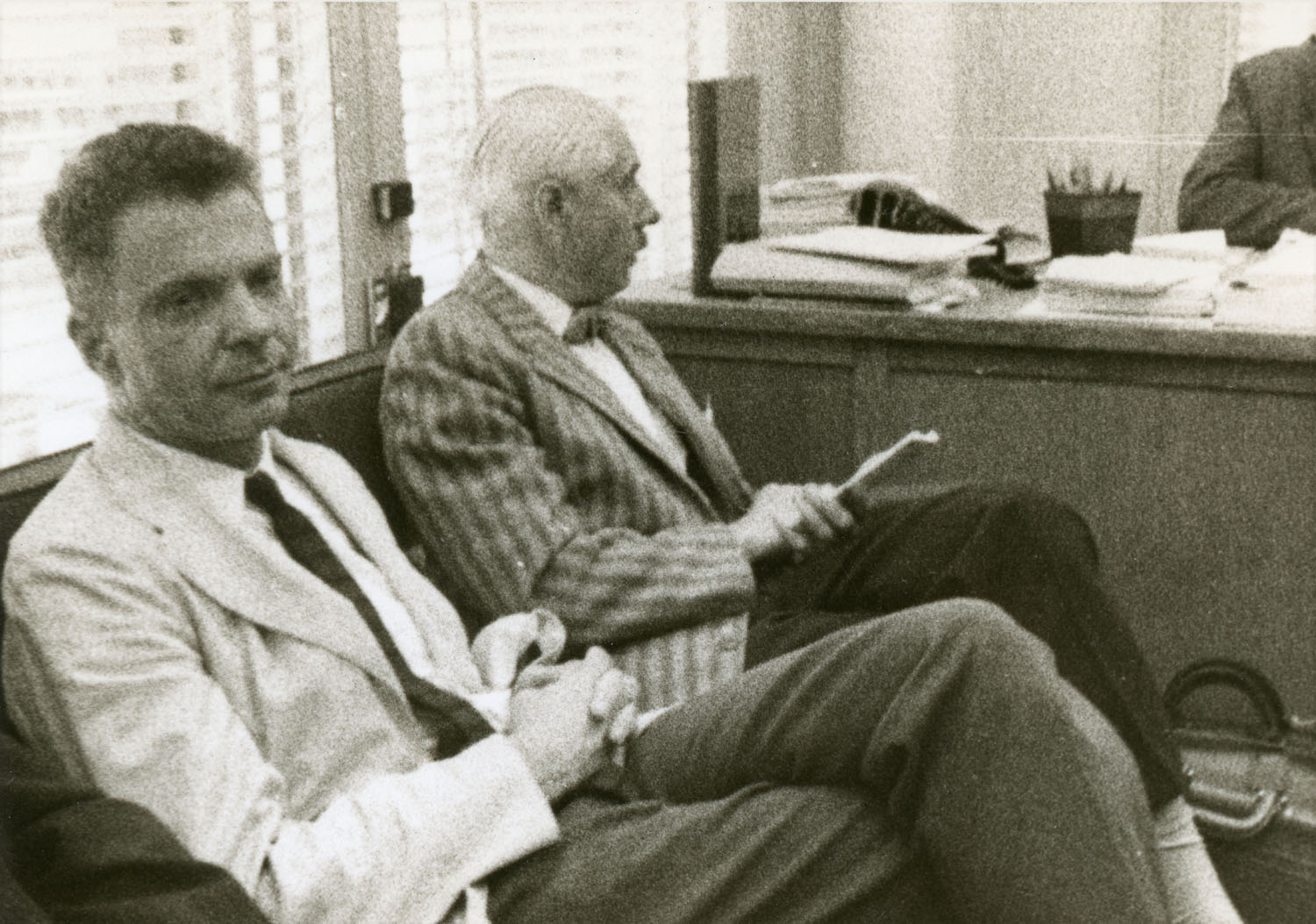
Halmos photographed Herbert Robbins (1915-2001), left, and Julius Hlavaty in September of 1960, possibly at Columbia University in New York City.
Robbins earned his Ph.D. in topology in 1938 from Harvard University under advisor Hassler Whitney. He spent the year 1938-1939 at the Institute for Advanced Study, where he may have first met or may have just missed Halmos, who spent the years 1939-1942 there. In 1939, Robbins moved to New York University, where he collaborated with Richard Courant on their famous book, What Is Mathematics? (1941). After wartime service in the U.S. Navy during the years 1942-46, Robbins joined the statistics faculty at the University of North Carolina at Chapel Hill in order to teach probability (he had written a few papers on geometric probability) and soon changed his research area to statistics. In 1953, he became a statistics professor at Columbia University, where he would spend most of the rest of his career, retiring in 1985. He then served as a statistics professor at Rutgers University in New Jersey until 1977. (Sources: MacTutor Archive, Mathematics Genealogy Project)
According to the National Council of Teachers of Mathematics (NCTM), Julius Hlavaty
was affiliated for many years with Columbia University, where he served as an instructor at Teachers College. He taught at several New York City high schools and was the first chairman of the department of mathematics at the Bronx High School of Science. He served on the Commission on Secondary School Curriculum and the Curriculum Workshop at Syracuse University. Hlavaty lectured and appeared on the national educational program Continental Classroom, broadcast on NBC-TV. He also instructed many National Science Foundation (NSF) institutes for teachers of mathematics.
Hlavaty served as president of NCTM from 1968 to 1970. (Source: National Council of Teachers of Mathematics (NCTM) biography)
For an introduction to this article and to the Paul R. Halmos Photograph Collection, please see page 1. Watch for a new page featuring six new photographs each week during 2012.
Regarding sources for this page: Information for which a source is not given either appeared on the reverse side of the photograph or was obtained from various sources during 2011-12 by archivist Carol Mead of the Archives of American Mathematics, Dolph Briscoe Center for American History, University of Texas, Austin.
Janet Beery (University of Redlands) and Carol Mead (Archives of American Mathematics, University of Texas, Austin), "Who's That Mathematician? Paul R. Halmos Collection - Page 43," Convergence (January 2012), DOI:10.4169/loci003801




